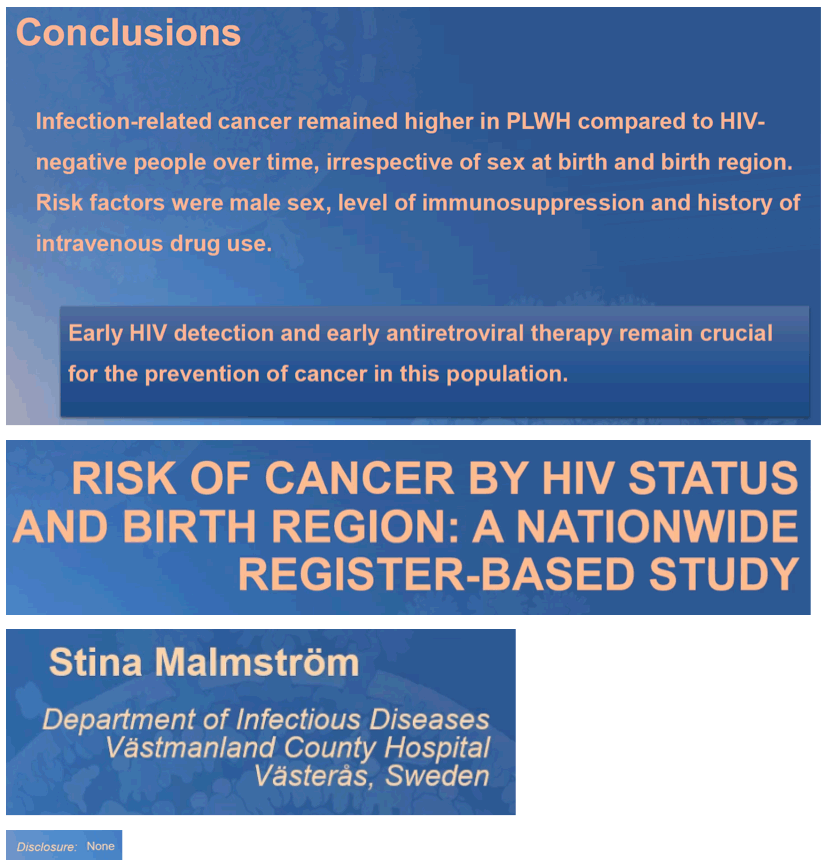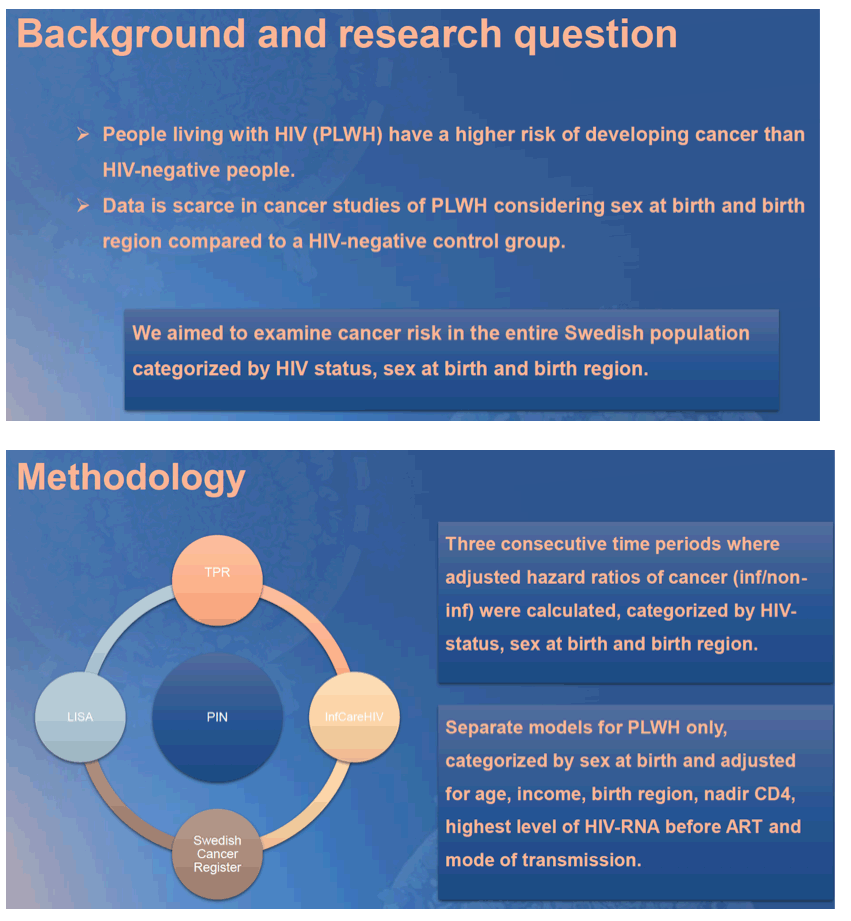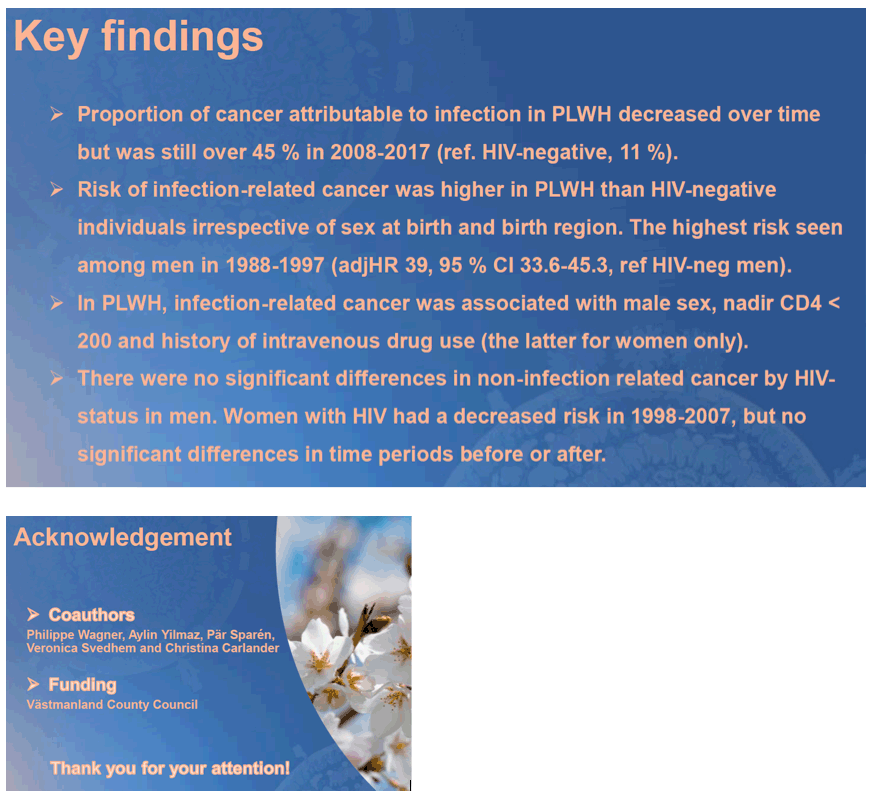 |
 |
 |
| |
RISK OF CANCER BY HIV STATUS AND BIRTH REGION: A NATIONWIDE REGISTER-BASED STUDY
|
| |
| |
CROI 2021 March 6-10 Reported by Jules Levin
Stina Malmstrom1, Philippe Wagner2, Aylin Yilmaz3, Par Sparén4, Veronica Svedhem4, Christina Carlander4
1Vastmanland County Hospital, Vasteras, Sweden, 2Uppsala University, Uppsala, Sweden, 3Sahlgrenska Academy at the University of Gothenburg, Gothenburg, Sweden, 4Karolinska Institute, Stockholm, Sweden
Background: There is a lack of register-based cancer cohort studies in people living with HIV (PLWH) that include a HIV-negative comparison group and the possibility to control for socioeconomic factors on an individual level. We aimed to examine cancer risk in the entire Swedish population categorized by HIV status, sex at birth and birth region.
Methods: The study population consisted of all people in Sweden, born 1940-2000 (n = 8 587 629), identified from the Swedish Total Population register and linked to the Swedish National HIV Register (InfCareHIV), the Swedish National Cancer Register and the Longitudinal Integration Database for Health Insurance and Labour Market Studies. The cohort was followed for three consecutive periods (1988-1997, 1998-2007, and 2008-2017). Adjusted Hazard Ratio (adjHR) of cancer (infection/non-infection-related) was calculated for each time period using Cox regression analyses, categorized by HIV-status, sex at birth, and birth region, adjusted for age and income. Separate models for PLWH only were categorized by sex at birth and adjusted for age, income, birth region, nadir CD4, HIV-RNA, and mode of HIV-transmission.
Results:
The proportion of cancer attributable to infection decreased over time in PLWH but was still over 40% in 2008-2017 (46% in women, 48%
in men) compared to 11% in HIV-negative people. Risk of infection-related cancer was higher in PLWH than in HIV-negative people for all time periods, irrespective of sex at birth and birth region, with the highest risk seen among men in 1988-1997 (adjHR 39.0, 95% CI 33.6-45.3, ref HIV-negative men).
In PLWH, infection-related cancer was associated with male sex, nadir CD4 < 200, and history of intravenous drug use (the latter for women only). There was no significant difference in risk of non-infection-related cancer by HIV status in men. Women with HIV had decreased risk of non-infection-related cancer in 1998-2007 (adjHR 0.3, 95 % CI 0.1-0.7, ref HIV-neg women 1998-2007) but no significant difference was seen in the periods before or after.
Conclusion: In this nation-wide cancer-register study the risk of infection- related cancer remained higher in PLWH compared to HIV-negative people over time, irrespective of sex at birth and birth region, and was associated with level of immunosuppression and history of intravenous drug use. Early HIV detection and early antiretroviral therapy remain crucial for the prevention of cancer in this population.



|
| |
|
 |
 |
|
|